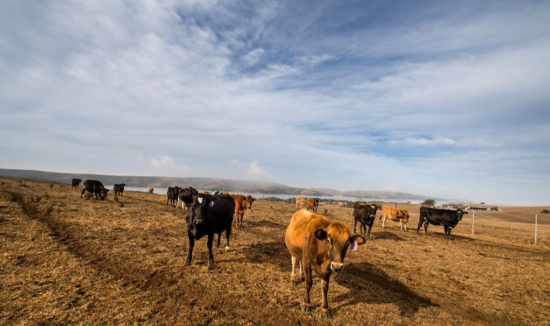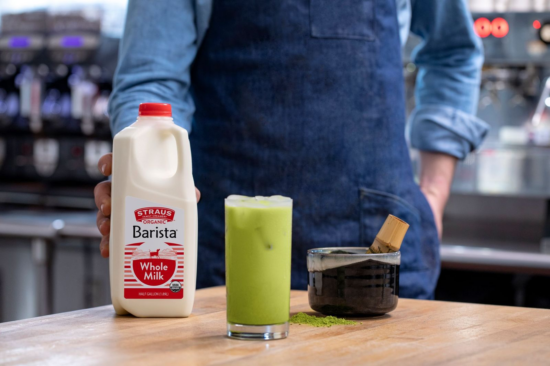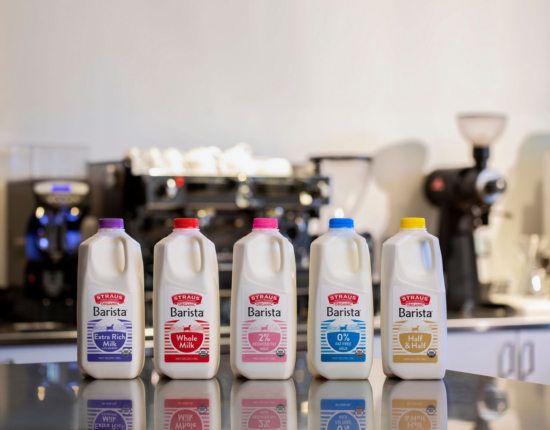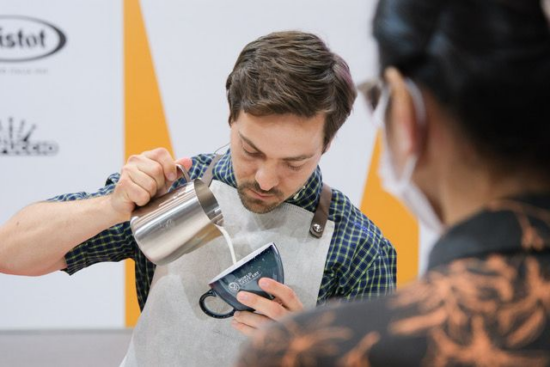
Not all milks are alike; here’s the scoop on homogenization and how it affects baristas.
BY TANYA NANETTI
SENIOR ONLINE CORRESPONDENT
Cover photo by Nikolai Chernichenko via Unsplash
Milk is familiar to most of us. Not just a drink for children, it’s also often consumed by adults and is of course one of the key ingredients at cafés. But you may be unfamiliar with the processing that milk undergoes before reaching the market, and one such process is homogenization.
The Process of Homogenization
Albert Straus is the CEO of Straus Family Creamery, a mission-driven company launched in 1994. They have a deep commitment to supporting an organic dairy farming system that is both environmentally friendly and economically viable.
Albert shares a brief explanation of basic milk processing: “Cows produce whole milk with two components: nonfat milk and cream. Left to settle, the cream naturally rises to the top. This is what happens in nature; then, before arriving on the market, most of the milks are ultra-pasteurized to increase shelf life, which involves ’cooking’ the milk at high temperature (at or above 280° F for at least 2 seconds). These more heavily processed milks forfeit flavor and nutritional integrity in their quest for a longer shelf life.”

Photo courtesy of Straus Family Creamery.
But not all dairy companies process milk heavily, and as Albert tells us, some dairy brands act differently—Straus Family Creamery’s organic milk is never ultra-pasteurized.
“It’s gently crafted with a high-temperature short time (HTST) pasteurization method at 168° F for 18 seconds. This process destroys harmful bacteria while still preserving the authentic flavor of the milk: a sweet, fresh, well-rounded taste,” he says.
Albert, who grew up on a dairy farm drinking raw milk straight from the cows’ milking barn, prefers to keep Straus organic milk as close as possible to its origin. They process their milk with no preservatives or additives, and for most of the dairy offered, without homogenization. Non-homogenized milk is as close to its natural taste and texture as possible, with the cream naturally floating on top.

To Homogenize or Not?
“We believe in delivering the highest-quality organic dairy products that are minimally processed, and that’s why all Straus Organic Cream-Top milk sold in grocery stores is non-homogenized,” Albert says. ”The only homogenized milks (we offer) are Straus Organic Half & Half, Organic Chocolate Milk, and Organic Eggnog, where homogenization is needed to fully blend the ingredients.”
Another exception to non-homogenized milk is Straus Organic Barista, which the company specially designs to be used in the professional environment of coffee and tea shops.

Photo courtesy of Straus Family Creamery.
“Straus Organic Barista milk is lightly homogenized, meaning the fat is mixed with the milk so that the cream no longer separates,” Albert says. ”Our barista customers rely heavily on the consistency of flavor and performance of the milk they pour. Straus Organic Barista milk … ensures consistency in every pour and allows baristas to create rich-tasting custom beverages with long-lasting, glossy microfoam.”
A Barista’s Experience
While brands like Straus Family Creamery decide to slightly homogenize milk specially designed for baristas, some farms choose a different approach. In Germany, brands like Brodowin—an organic farm located less than 50 miles from Berlin—offer non-homogenized milks for professional use in coffee shops and restaurants. Brodowin bottles a fully non-homogenized, full-cream milk with at least 3.7% fat that has become the reference milk for most of the Berlin specialty-coffee scene. They deliver milk in disposable bags made of Calymer, a tear-resistant material that consists of 40% chalk, which weighs only 16g per bag and is easily recycled. Brodowin’s full-cream milk is incredibly tasty and creamy; however, it can be a challenge for new-in-town baristas who are learning to steam it for the first time.
Johannes Otto, head barista at Rösttrommel Kaffeerösterei in Nuremberg and Germany Latte Art Champion 2020, helps us understand why.

Photo courtesy of Johannes Otto.
“In our cafés, we work with fresh organic milk, not homogenized, that comes directly from the producer,” Johannes explains. “This is the best quality you can get. But it can also be a bit challenging because you always have the fat swimming on top and the watery part below. We get our milk delivered in 10-liter buckets and you always have to give it a good shake before use.”
Johannes, who has also worked with homogenized milk for latte art competition training, can easily explain the difference between the two kinds of milk. “Handling homogenized milk is obviously much easier, because every drop is basically the same. But still, I prefer the not-homogenized milk because it has gone through fewer processes, which is better for natural quality, and I’m always looking for quality.”
He adds, “Every process that milk runs through changes its natural taste, and that’s why in my opinion not-homogenized milk tastes fresher than homogenized. In terms of milk frothing, non-homogenized milk is creamier and silkier, and when properly shaken, produces a shinier milk foam.”
In June 2019, during the World Latte Art Championship, many competitors were surprised by the non-homogenized milk used for the competition.

Photo courtesy of Johannes Otto.
“I think it was something new for the competitors and something that no one had planned,” Johannes says. “As far as I can remember, it was milk at a quality level called Demeter, which is a step up from organic. This quality doesn’t allow homogenization, because it aims to be processed [as little] as possible. For a competition where consistency is the key, it is obviously [harder] to work with, but in reality the only thing you need to change while frothing is just to keep the stretching part a little longer than usual. The foam doesn’t build up so quickly in non-homogenized milk. After that, it’s pretty much the same to work with: I even think that non-homogenized milk has a finer, silkier foam structure perfect for advanced latte art.”
Johannes concludes: “Non-homogenized milk is still perfectly steamable if you just shake the milk first to re-incorporate the fat. That’s the key.”
ABOUT THE AUTHOR
Tanya Nanetti (she/her) is a specialty-coffee barista, a traveler, and a dreamer. When she’s not behind the coffee machine (or visiting some hidden corner of the world), she’s busy writing for Coffee Insurrection, a website about specialty coffee that she’s creating along with her boyfriend.

